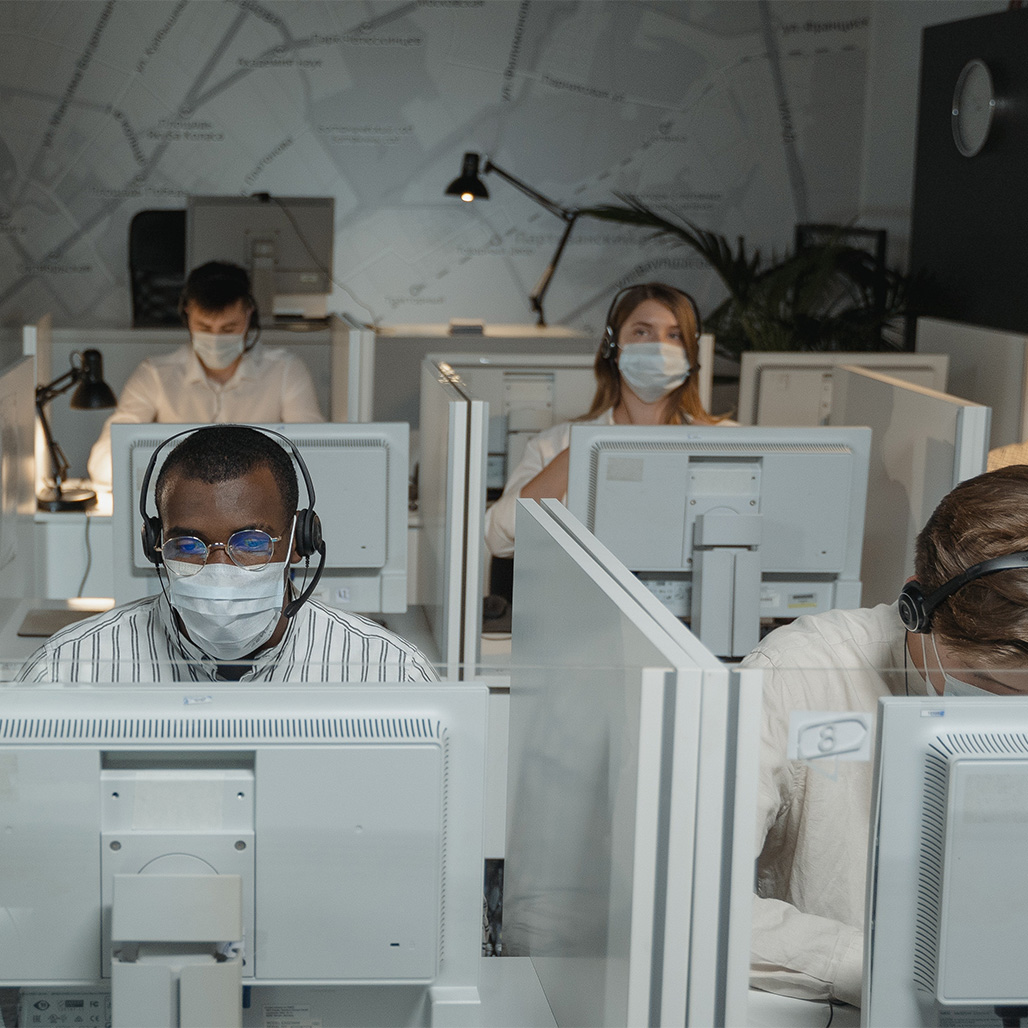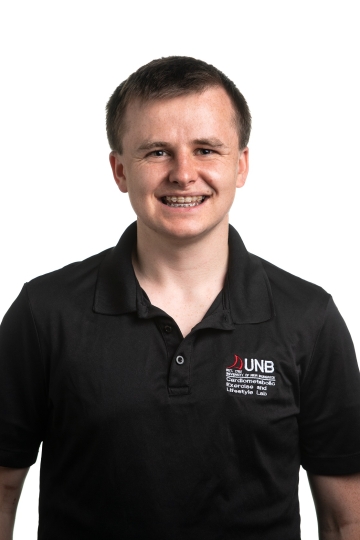Audrée
Emergency Medical Dispatcher
Urgences-santé
Learn About My Career
I was born/raised in : Ste-Catherine, Québec
I now live in : Montréal, Québec
I did my training or studies in : The necessary prerequisite for being a dispatcher is a high school diploma from any official school. Once hired, Urgences-santé offers approximately 3 months of in-house training.
Here is the path of a 911 call for a medical problem:
A dispatcher receives a call in his or her headset and information appears on the screen using an address validation system. We ask the caller some questions to understand the problem. Following these protocols, the caller is guided through the process, and is instructed on what to do while waiting for the ambulance.
Depending on the problem, the caller is assigned a priority rank. In the computer, a call card is then created. This call card contains all the important information (e.g., address, age of the injured person, priority of the call, and main problem). This call card is transmitted to a person in the ambulance service. This person assigs an ambulance to the call, using a GPS system.
We locate the nearest available ambulance and send the call card to the ambulance computer. The paramedics proceed to the call site. On the way, they prepare themselves according to the information they have received. This computerized route can sometimes have problems. For example, sometimes the computers are not working. In this case, the whole process must be done using paper. So calls are handwritten and hand delivered to dispatch. Instead of being sent out using electronic means, the call is sent over the radio waves.
This whole process requires good communication between colleagues, since for each call, at least 5 people are involved. In places like Montreal, you must also be bilingual because both English and French are used. To do this work, knowledge of health sciences allows you to understand the situations and to adequately help the callers. You must also be able to use maps in order to locate ambulances when GPS systems are not available.
When I was in high school, I knew I wanted to do something that would help others. I had this desire to make a difference, but I didn't know exactly what to do. I decided to start a program in pre-hospital emergency care. My plan was to become a paramedic. During my final internships, I realized that being in the field was not for me.
I discovered the job of emergency medical dispatcher when I was doing my internship at Urgences-Santé and I saw a poster in the staff garage. I applied and decided to stop my CEGEP studies to start my new career. I now use my empathy, desire to help others, and my medical knowledge in another way that I enjoy more. It was hard to give up my studies after investing several years in the program to be a paramedic. However, it was worth it because I am definitely happier where I am now. It is important to follow your heart.
My job allows me to help others and that is what motivates me. Making a difference in another person's life is very rewarding to me. The exciting thing is that no two calls are the same. As a result, you have to like the unknown. You also need to have good stress management to deal with all kinds of situations. Sometimes the calls are very urgent. At these times, you have to move rapidly to help someone as quickly as possible. In other cases, some calls require more patience and listening. For example, some people may call for psychological help. This type of problem requires a different approach. You have to know how to adapt to the situation. For someone who doesn't like routine, I find this very motivating.
My work affects the lives of others, mostly when they are vulnerable and have health problems. I try to help them by giving them specific medical instructions while the paramedics are traveling to the location. My job is to reassure, empathize and listen to people. I make a difference in a people's health by making the right decisions and giving the right instructions.
To relax, I like to read in the bath with candles. What could be better than escaping into a story other than your own! I also like to play soccer. It helps reduce the anxiety that my job can bring. I like to have a good balance between being calm and relaxed and spending energy. To give back to others and relax in a different way, I recently got involved in overcoming food insecurity. I do this by preparing meals for a food redistribution organization in Montreal.
It is important to find a good balance between a salary that allows you to live according to your needs and an environment in which you feel good. It may seem difficult to choose what you want to do for a living, but there is no rush. Trying something is never a failure. Experiences help us grow, when we persevere. Don't hesitate to search for job offers. Many jobs like mine are unknown but just as essential!
What I do at work
Here is the path of a 911 call for a medical problem:
A dispatcher receives a call in his or her headset and information appears on the screen using an address validation system. We ask the caller some questions to understand the problem. Following these protocols, the caller is guided through the process, and is instructed on what to do while waiting for the ambulance.
Depending on the problem, the caller is assigned a priority rank. In the computer, a call card is then created. This call card contains all the important information (e.g., address, age of the injured person, priority of the call, and main problem). This call card is transmitted to a person in the ambulance service. This person assigs an ambulance to the call, using a GPS system.
We locate the nearest available ambulance and send the call card to the ambulance computer. The paramedics proceed to the call site. On the way, they prepare themselves according to the information they have received. This computerized route can sometimes have problems. For example, sometimes the computers are not working. In this case, the whole process must be done using paper. So calls are handwritten and hand delivered to dispatch. Instead of being sent out using electronic means, the call is sent over the radio waves.
This whole process requires good communication between colleagues, since for each call, at least 5 people are involved. In places like Montreal, you must also be bilingual because both English and French are used. To do this work, knowledge of health sciences allows you to understand the situations and to adequately help the callers. You must also be able to use maps in order to locate ambulances when GPS systems are not available.
My career path is
When I was in high school, I knew I wanted to do something that would help others. I had this desire to make a difference, but I didn't know exactly what to do. I decided to start a program in pre-hospital emergency care. My plan was to become a paramedic. During my final internships, I realized that being in the field was not for me.
I discovered the job of emergency medical dispatcher when I was doing my internship at Urgences-Santé and I saw a poster in the staff garage. I applied and decided to stop my CEGEP studies to start my new career. I now use my empathy, desire to help others, and my medical knowledge in another way that I enjoy more. It was hard to give up my studies after investing several years in the program to be a paramedic. However, it was worth it because I am definitely happier where I am now. It is important to follow your heart.
I am motivated by
My job allows me to help others and that is what motivates me. Making a difference in another person's life is very rewarding to me. The exciting thing is that no two calls are the same. As a result, you have to like the unknown. You also need to have good stress management to deal with all kinds of situations. Sometimes the calls are very urgent. At these times, you have to move rapidly to help someone as quickly as possible. In other cases, some calls require more patience and listening. For example, some people may call for psychological help. This type of problem requires a different approach. You have to know how to adapt to the situation. For someone who doesn't like routine, I find this very motivating.
How I affect peoples’ lives
My work affects the lives of others, mostly when they are vulnerable and have health problems. I try to help them by giving them specific medical instructions while the paramedics are traveling to the location. My job is to reassure, empathize and listen to people. I make a difference in a people's health by making the right decisions and giving the right instructions.
Outside of work I
To relax, I like to read in the bath with candles. What could be better than escaping into a story other than your own! I also like to play soccer. It helps reduce the anxiety that my job can bring. I like to have a good balance between being calm and relaxed and spending energy. To give back to others and relax in a different way, I recently got involved in overcoming food insecurity. I do this by preparing meals for a food redistribution organization in Montreal.
My advice to others
It is important to find a good balance between a salary that allows you to live according to your needs and an environment in which you feel good. It may seem difficult to choose what you want to do for a living, but there is no rush. Trying something is never a failure. Experiences help us grow, when we persevere. Don't hesitate to search for job offers. Many jobs like mine are unknown but just as essential!
Being an emergency medical dispatcher means answering calls to 911 and managing the activities of the ambulances.
When I was a student I enjoyed:
- Art
- History
- Literature and Language Arts
- Physical Education/Health
- Native Studies/Languages
When I was a student, I would describe myself as someone who:
- Brought People Together
- Enjoyed working with my hands
- Played on a sports team
- Wasn't sure what I wanted to do
- Liked being given specific instructions
Related Topics
Explore More Career Profiles
-
Brianna Lummerding
Career Profiles
Agronomic Innovation Manager
I look after all things related to soil management for a group of retailers. -
Li Tan (he/him)
Career Profiles
Molecular Lead
I coordinate the day-to-day operations in the DNA Extraction Lab. -
Tyler Morhart (video)
Career Profiles
Scientist, Beamline Responsible - SyLMAND
I am responsible for the SyLMAND beamline at the Canadian Light Source synchrotron facility. -
Li Tan (Video)
Career Profiles
Molecular Lead
I coordinate the day-to-day operations in the DNA Extraction Lab. -
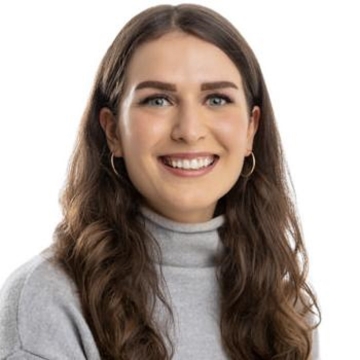
Rashell Featherstone (she/her)
Career Profiles
Senior Program Associate
I coordinate projects for the development of new products at STEMCELL. -
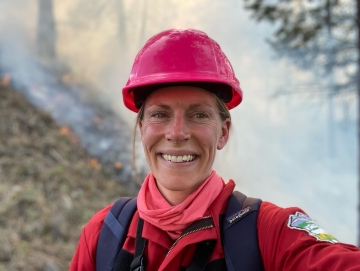
Kira Hoffman (she/her)
Career Profiles
Postdoctoral Researcher/Fire Ecologist
I am a researcher at both a university and a not-for profit organization where I am gaining experience to become a senior researcher. -
Zoë Ehlert (Video)
Career Profiles
Manager, Marker Assisted Breeding
I lead a team that develops canola crops by breeding plants with traits we are looking for. -
Zoë Ehlert
Career Profiles
Manager, Marker Assisted Breeding
I lead a team that develops canola crops by breeding plants with traits we are looking for. -
Jennifer Baltzer (she/her)
Career Profiles
Professor and Canada Research Chair in Forests and Global Change
I work at a university, teaching students and conducting research on the impact of climate change on forests in Canada and around the world. -
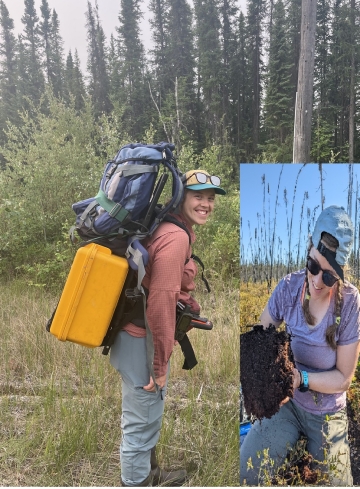
Caitlyn Lyons (she/her)
Career Profiles
Ph.D. Candidate
I am working towards my PhD and studying the forests in the Northwest Territories. -
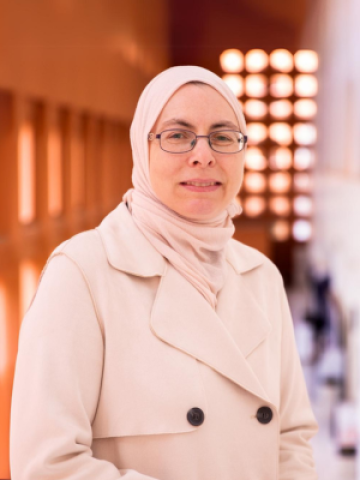
Joann Whalen
Career Profiles
Professor at the Faculty of Agricultural and Environmental Sciences,
I teach advanced courses on how to manage soils to produce healthy, nutritious food and maintain healthy ecosystem functions.
